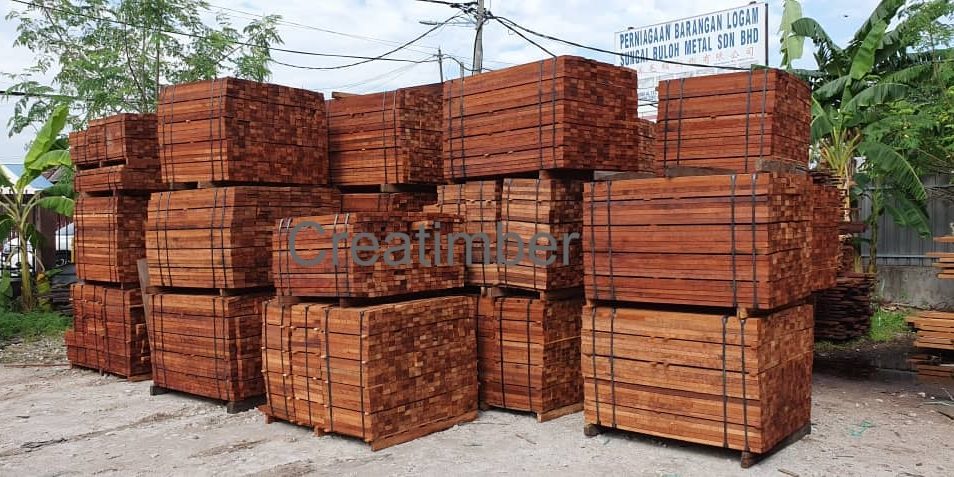A Detailed Comparison of Merbau and Teak Wood
Choosing the right type of wood for your project can be challenging. With numerous high-quality options available, selecting the wood that perfectly suits your needs is essential.
If durability and strength are your top priorities, Merbau and Teak are excellent choices. In this post, we’ll explore the characteristics of these two types of wood, helping you make an informed decision for your next project.
What is Merbau Wood?
Merbau wood, native to Southeast Asia, is renowned for its durability and natural resistance to rot and insects. Often referred to as Kwila or Ipil, this hardwood is a popular choice for projects requiring high resilience, even in challenging outdoor conditions.
Key Features of Merbau Wood:
- Hardness: Denser and harder than many other hardwoods, making it resistant to dents and scratches.
- Color: Orangish-brown tones with striking yellow streaks.
- Applications: Ideal for decking, fencing, flooring, cabinetry, and outdoor furniture.
What is Teak Wood?
Teak wood, primarily native to southern Asia, is one of the most moisture-resistant and durable hardwoods available. Its high oil content gives it natural resistance to rot, insects, and harsh environmental conditions.
Key Features of Teak Wood:
- Durability: Extremely resistant to decay, rot, and termites.
- Color: Golden to dark brown with a closed grain, providing a sophisticated look.
- Applications: Used in flooring, furniture, boats, veneers, and exterior constructions.
Comparing Merbau and Teak Wood:
| Feature | Merbau Wood | Teak Wood |
| Scientific Name | Intsia Bijuga | Tectona Grandis |
| Density (Dried Weight) | 815 kg/m³ | 655 kg/m³ |
| Hardness (Janka) | 1,840 lbf | 1,070 lbf |
| Durability | Durable | Extremely durable |
| Color | Orangish-brown with yellow streaks | Golden to dark brown |
| Best Uses | Outdoor projects | Indoor furniture and boats |
Durability of Merbau vs. Teak Wood
- Teak Wood: Exceptionally durable, particularly against rot, decay, and termites, due to its natural oils.
- Merbau Wood: Resistant to moisture and outdoor elements, making it an excellent choice for outdoor applications.
Working with Merbau and Teak Wood
- Merbau Wood:
- Dense and hard, slightly challenging to work with.
- Stains and finishes beautifully.
- Teak Wood:
- Moderate workability but dulls cutting tools due to silica content.
- Offers an exquisite finish, enhancing its natural elegance.
Cost Comparison
- Merbau Wood: Ranges from $10 to $15 per board foot.
- Teak Wood: Slightly pricier, costing around $15 to $20 per board foot.
Which is Better?
- For Furniture:
Teak wood is preferred for its beautiful appearance and heat resistance. Merbau is ideal for outdoor furniture due to its density and moisture resistance.
- For Flooring:
Merbau’s hardness makes it less prone to scratches, while Teak offers unmatched moisture resistance and aesthetic appeal.
- For Decking:
Merbau is long-lasting and weather-resistant, with a lifespan of 25–30 years. Teak’s natural oils protect it from insects and rot, lasting 15–20 years.
Conclusion
Whether you prioritize strength and outdoor resilience or visual appeal and moisture resistance, both Merbau and Teak are excellent options.
- Choose Merbau for outdoor durability and high density.
- Opt for Teak if timeless beauty and rot resistance are your main considerations.
For premium-quality Merbau and Teak wood in Malaysia, trust Creatimber Global Sdn Bhd—your reliable supplier of high-quality Malaysian wood products. Visit www.creatimber.com.my to explore our full range of offerings!






